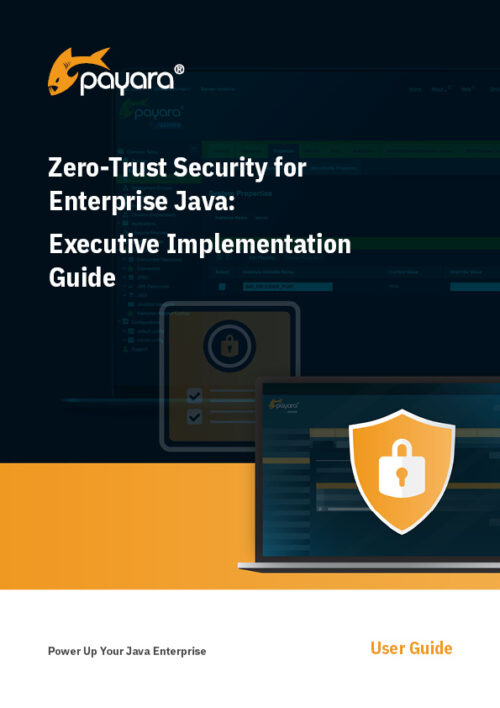 3 minutes
3 minutes
End-of-Life Technology: How to Drive Innovation Without Compromising Stability
When legacy systems approach end-of-life (EOL), enterprise IT teams typically face the choice of moving forward at all costs […]

Cybersecurity isn’t just about building walls, fortresses, moats or any other external barrier anymore. Nowadays, it’s important to check every door, window and every visitor, even if they look familiar. That’s the core idea behind Zero Trust security, a model that Java developers can’t afford to ignore.
This blog post looks at what Zero Trust is, how it differs to traditional approaches and how to successfully implement it to secure your workloads.
For years, organizations have been relying on a “castle-and-moat” model to secure digital assets, building strong defenses around network perimeters to keep threats out, while internal network users are trusted by default.
The traditional “castle-and-moat” security approach feels outdated and insufficient for modern organizations, as once someone gets inside, they move freely. Zero Trust flips the script by relying on a simple principle: never trust, always verify. Hence, every request is suspect, every identity must be validated and access is never assumed.
Th Zero Trust security model relies on a philosophy of vigilance and constant monitoring. As such, it controls access through a process of continuous verification, where identity and permissions are re-validated at every step and for every resource, regardless of where a user or device is connecting from. Rather than granting broad, lasting access, Zero Trust insists on the principle of least privilege, so users are only provided the exact resources required to perform their tasks, and this access is frequently reassessed as context changes or sessions time out.
In addition, Zero Trust-based architectures are designed to minimize the potential damage from breaches by segmenting networks, as it assumes that attackers may already be present on the network. Traditional perimeter-based security is growing less relevant for organizations with remote workers, distributed offices and cloud-based infrastructures supporting modern, dynamic IT environments. In such instances, Zero Trust is considered the preferred approach.
As Java developers, you’re no longer just writing monolithic apps deployed on-premises, on one secure server inside a walled-off network. You’re building for containerized environments, microservices and cloud deployments.
That means your services are:
In these scenarios, Zero Trust is mission-critical, as with this approach, every microservice call, API request and user interaction in your Java stack must be validated, encrypted and logged. For developers, that directly translates into how you design, code, configure and deploy applications.
Knowing that Zero Trust matters is only half the issue. The real challenge is putting it into practice across your Java projects without adding friction or risking misconfigurations. That’s exactly why we wrote the ‘Zero-Trust Security for Enterprise Java: Executive Implementation Guide’. It turns the “never trust, always verify” theory into a concrete roadmap you can apply in code, frameworks and production environments.
Zero Trust offers a practical framework that Java teams can implement today. Our latest guide lays out how to adopt Zero-Trust principles across different Java frameworks, from Jakarta EE to Spring Boot to Quarkus, giving you actionable strategies that match your architecture, compliance needs and performance goals.
As a playbook, this guide shows you how to move from concept to code with clear steps, security controls and roadmap phases. In particular, it emphasizes five critical Zero Trust focus areas every Java team should align on:
Implementing Zero Trust in Java applications is best done step by step. The guide outlines a five-phase migration strategy, each building on the last. This phased approach ensures your security posture strengthens without overwhelming teams or destabilizing production systems.
Zero-Trust is not a slogan or a one-time action. It is a sequence. By adopting an identity-first, authorization-rich, fully encrypted, segmented and continuously monitored security model, your team can substantially reduce risk while building trust with customers and regulators.
The guide gives you the complete playbook and Payara can provide the platform support to make Zero Trust a day-to-day reality. Get your free copy now to make your Java applications secure by design.

A clear, strategic resource for CTOs and technology leaders to implement identity-first, compliance-ready security that keeps business moving without compromise.
Download the Free Guide Now 3 minutes
3 minutes
When legacy systems approach end-of-life (EOL), enterprise IT teams typically face the choice of moving forward at all costs […]
 5 minutes
5 minutes
At Devoxx Belgium 2025, I was able to talk about what happens after you build your container. In theory, […]
 5 minutes
5 minutes
Welcome aboard the October issue of The Monthly Catch!As the leaves turn and conference season hits full stride, the […]